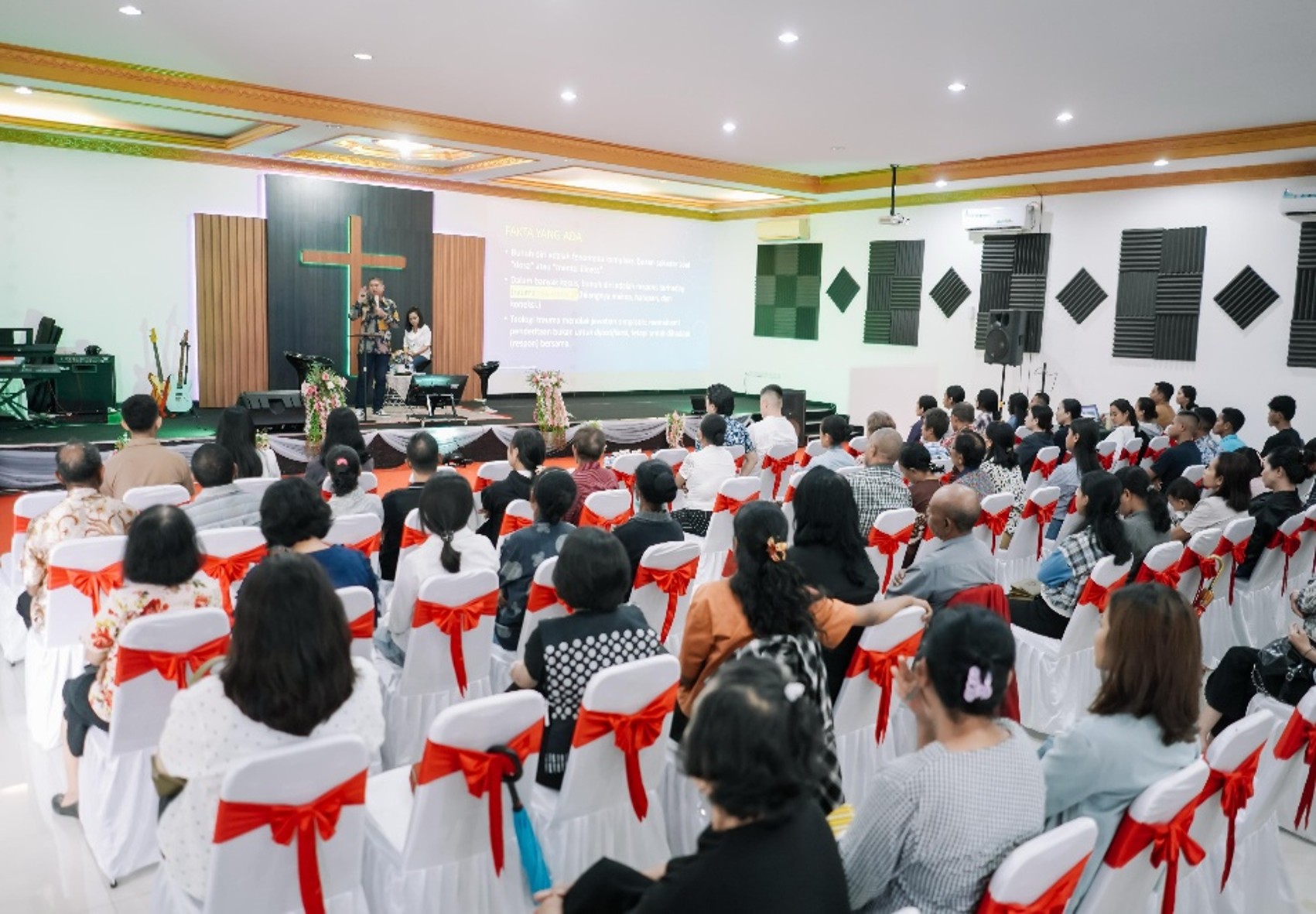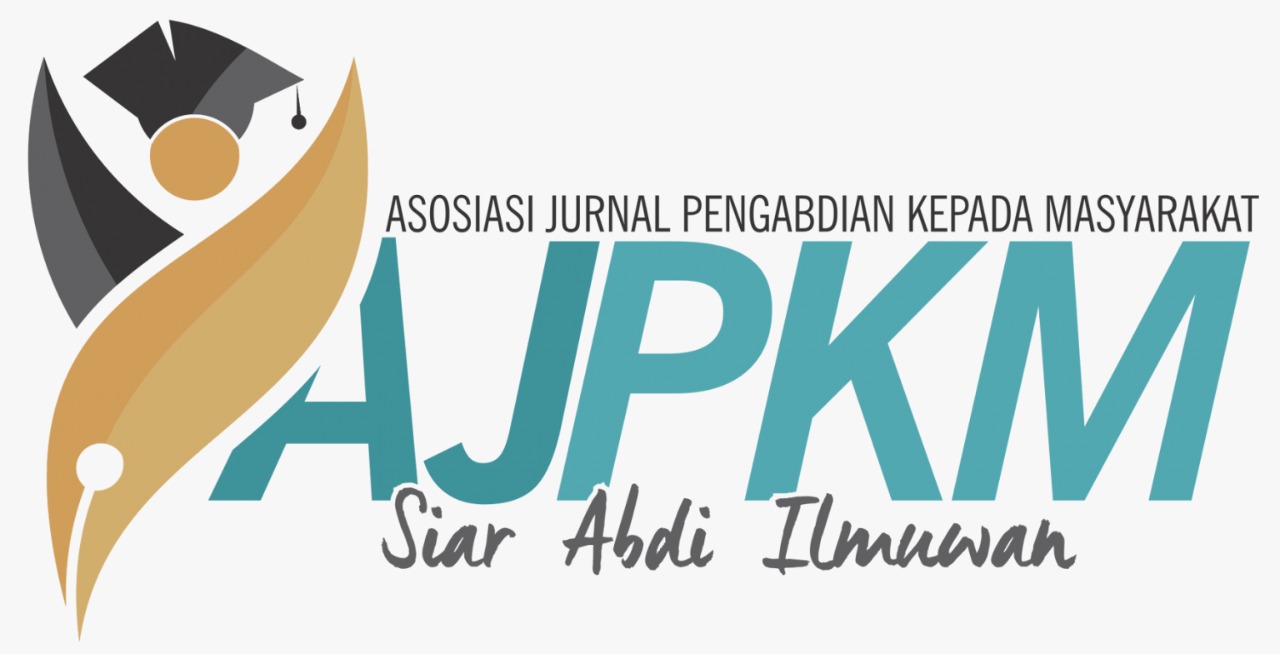Mengungkap Misteri Bunuh Diri di Kupang, NTT: Seminar Interdisipliner dan Rekonstruksi Komunitas Pemulih Berbasis Teologi Trauma
DOI:
https://doi.org/10.47457/jps.v6i2.607Keywords:
church, healing, interdisciplinary, pastoral presence, suicide, trauma theologyAbstract
The seminar “MENGUNGKAP MISTERI BUNUH DIRI: Antara Trauma, Mental Breakdown, dan Jejak Forensik (Unveiling the Mystery of Suicide: Between Trauma, Mental Breakdown, and Forensic Traces) represents a practical theological response to suicide as a multidimensional crisis—psychological, spiritual, and social. This article presents a systematic reflection on the seminar using a qualitative-reflective approach within the framework of trauma theology. Findings reveal that suicide should not be interpreted merely as a personal pathology or faith failure, but as an extreme expression of disrupted meaning caused by unresolved trauma. The interdisciplinary intervention—clinical psychiatry, forensic medicine, and trauma-informed theology—created dialogical spaces that dismantled taboos, nurtured collective empathy, and restructured pastoral practices within the church. The study shows that today’s church must shift from normative proclamation to becoming a healing community that dares to dwell within wounds. This seminar emerges as an ecclesiological moment that embodies an alternative liturgy, not in sacraments, but in the communion of woundedness. The article affirms that evangelism in the age of trauma begins not with doctrine, but with presence, non-judgment, and narratives that embrace suffering as an essential part of Christian spirituality.
Kegiatan seminar “MENGUNGKAP MISTERI BUNUH DIRI: Antara Trauma, Mental Breakdown, dan Jejak Forensik” merupakan respon teologis berbasis praktik terhadap fenomena bunuh diri sebagai krisis multidimensional: psikis, spiritual, dan sosial. Tulisan ini menyajikan refleksi sistematis dari seminar tersebut dengan pendekatan kualitatif-reflektif dan kerangka teologi trauma. Hasilnya menunjukkan bahwa bunuh diri tidak dapat dipahami hanya sebagai patologi personal atau kegagalan iman, melainkan sebagai ekspresi ekstrem dari keterputusan makna akibat luka yang tidak diberi ruang untuk dimaknai. Intervensi lintas bidang yaitu psikiatri klinis, forensik medis, dan teologi trauma, menghasilkan ruang dialogis yang mampu membongkar tabu, menumbuhkan empati kolektif, dan mereformasi struktur pastoral gereja. Temuan menunjukkan bahwa gereja masa kini perlu bergeser dari posisi pewarta normatif menuju komunitas pemulih yang berani tinggal dalam luka. Seminar ini menjadi peristiwa eklesiologis baru yang merepresentasikan bentuk liturgi alternatif, bukan dalam sakramen, melainkan dalam perjamuan luka bersama. Kajian ini menegaskan bahwa penginjilan dalam era trauma tidak dimulai dari doktrin, melainkan dari kehadiran yang tidak menghakimi dan narasi yang merangkul penderitaan sebagai bagian sah dari spiritualitas Kristen.
Downloads
References
Arya, Vikas, Andrew Page, Rakhi Dandona, Lakshmi Vijayakumar, Peter Mayer, and Gregory Armstrong. 2019. “The Geographic Heterogeneity of Suicide Rates in India by Religion, Caste, Tribe, and Other Backward Classes.” Crisis 40, no. 5: 370–74. https://doi.org/10.1027/0227-5910/a000574.
Christoffersen, Mikkel G, Annette Haußmann, and Anne Austad. 2024. “Caring For–Caring About: Negotiations of Values in Pastoral Care.” Religions 15, no. 5: 619. https://doi.org/10.3390/rel15050619.
Digtara.com. 2025. “Dokter Dan Pendeta Di Kupang Membedah Bunuh Diri: Antara Trauma, Mental Breakdown dan Jejak Forensik.” Digtara.Com, March 30, 2025. https://www.digtara.com/nusantara/206176/dokter-dan-pendeta-di-kupang-membedah-bunuh-diri-antara-trauma-mental-breakdown-dan-jejak-forensik/.
Downie, Alison. 2022. “Christian Shame and Religious Trauma.” Religions 13, no. 10: 925. https://doi.org/10.3390/rel13100925.
Falgares, Giorgio, Daniela Marchetti, Giovanna Manna, Pasquale Musso, Osmano Oasi, Daniel C Kopala‐Sibley, Sandro D Santis, and Maria C Verrocchio. 2018. “Childhood Maltreatment, Pathological Personality Dimensions, and Suicide Risk in Young Adults.” Frontiers in Psychology 9. https://doi.org/10.3389/fpsyg.2018.00806.
Farr, Paddy. 2020. “In This Moment, We Are All Dr. Rieux: COVID-19, Existential Anxiety, and the Absurd Hero.” Journal of Humanistic Psychology 61, no. 2: 275–82. https://doi.org/10.1177/0022167820937504.
Garda Indonesia. 2025a. “Rumah Doa Abraham Rengkuh Jiwa Dan Pulihkan Mental Bunuh Diri. .” Garda Indonesia, March 30, 2025. https://gardaindonesia.id/2025/03/rumah-doa-abraham-rengkuh-jiwa-dan-pulihkan-mental-bunuh-diri/.
———. 2025b. “Keluarga dan Komunitas, Benteng Penangkal Mental Bunuh Diri. .” Garda Indonesia, April 2, 2025. Garda Indonesia.
Gerbrandt, Julianne, and Stefania Strati. 2021. “From Despair to Hope: A Narrative Journey to Becoming Amateur Intellectuals During COVID-19.” Journal of Digital Life and Learning 1, no. 1: 1–15. https://doi.org/10.51357/jdll.v1i1.115.
Geronimus, Arline T, John Bound, Timothy Waidmann, Javier M Rodríguez, and Brenden Timpe. 2019. “Weathering, Drugs, and Whack-a-Mole: Fundamental and Proximate Causes of Widening Educational Inequity in U.S. Life Expectancy by Sex and Race, 1990–2015.” Journal of Health and Social Behavior 60, no. 2: 222–39. https://doi.org/10.1177/0022146519849932.
Hill, Preston. 2022. “Christ’s Body Keeps the Score.” Theologica an International Journal for Philosophy of Religion and Philosophical Theology 7, no. 1. https://doi.org/10.14428/thl.v7i1.64223.
Jones, Serene. 2019. Trauma + Grace Theology in a Ruptured World. 2nd ed. Louisville, Kentucky: Westminster John Knox Press.
Kim, Gangsan, Jiyoon Shin, and Jae-Won Kim. 2021. “The Mediating Role of Internalizing and Externalizing Symptoms in the Relationship Between Childhood Trauma and Suicidality Among Adolescents: A Structural Equation Model.” Child and Adolescent Psychiatry and Mental Health 15, no. 1. https://doi.org/10.1186/s13034-021-00434-x.
Martínez-Medina, Consuelo B, and Alain R Rodríguez-Orozco. 2023. “Prolonged Grief Disorder Treatment: An Approach to COVID-19 Grief.” Salud Mental 46, no. 3: 165–75. https://doi.org/10.17711/sm.0185-3325.2023.021.
Martínez-Medina, Consuelo Bernarda, and Alain R. Rodríguez-Orozco. 2023. “Prolonged Grief Disorder Treatment: An Approach to COVID-19 Grief.” Salud Mental 46, no. 3 (June): 165–75. https://doi.org/10.17711/SM.0185-3325.2023.021.
Moltmann, Jurgen. 2001. The Crucified God . Scm Press.
Petrus, Chiara F, Hajar M S Sahimi, Marhani Midin, and Jane T Y Lim. 2023. “The Impact of Mental Health Stigma in a Young Malaysian Lady With Recurrent Suicidal Ideations and Moribund Presentations to the Emergency Department: A Case Report.” Frontiers in Psychiatry 14. https://doi.org/10.3389/fpsyt.2023.1243015.
Rambo, Shelly. 2010. Spirit and Trauma : A Theology Of Remaining. Louisville, Kentucky: Westminster John Knox Press.
Rogerson, Olivia, Thom Baguley, and Daryl B O’Connor. 2023. “Childhood Trauma and Suicide.” Crisis 44, no. 5: 433–41. https://doi.org/10.1027/0227-5910/a000886.
Rohi, Jane Angriani. 2025. “Lonjakan Kasus Bunuh Diri, Alarm Bahaya bagi Kesehatan Mental.” RRI.Co.Id, January 31, 2025.
Scott, Brandon G, and Carl F Weems. 2012. “Natural Disasters and Existential Concerns.” Journal of Humanistic Psychology 53, no. 1: 114–28. https://doi.org/10.1177/0022167812449190.
Stephens, Darryl W. 2021. “Bearing Witness as Social Action: Religious Ethics and Trauma-Informed Response.” Trauma Care 1, no. 1: 49–63. https://doi.org/10.3390/traumacare1010005.
Suara NTT. 2025. “Seminar Bedah Misteri Bunuh Diri: Antara Teologi Trauma, Kesehatan Mental dan Peran Forensik.” SuaraNTT, March 29, 2025. https://suarantt.com/seminar-bedah-misteri-bunuh-diri-antara-teologi-trauma-kesehatan-mental-dan-peran-forensik/.
Vencezacarias. 2025. “Sebanyak Empat Kasus Bunuh Diri Terjadi Awal 2025.” RRI.Co.Id, January 20, 2025.
Weaver, John B. 2013. “Exploring Hope.” Anvil 29, no. 1: 25–41. https://doi.org/10.2478/anv-2013-0003.
Yih, Caroline. 2025. “Anger and Sexual Trauma: A Theological Reflection.” Theology Today 81, no. 4: 285–96. https://doi.org/10.1177/00405736241292233.

Downloads
Published
How to Cite
Issue
Section
License
Copyright (c) 2025 John Manongga

This work is licensed under a Creative Commons Attribution-ShareAlike 4.0 International License.
Authors who publish with this journal agree to the following terms:
- Authors retain copyright and grant the journal right of first publication with the work simultaneously licensed under a Creative Commons Attribution License that allows others to share the work with an acknowledgement of the work's authorship and initial publication in this journal.
- Authors are able to enter into separate, additional contractual arrangements for the non-exclusive distribution of the journal's published version of the work (e.g., post it to an institutional repository or publish it in a book), with an acknowledgement of its initial publication in this journal.
- Authors are permitted and encouraged to post their work online (e.g., in institutional repositories or on their website) prior to and during the submission process, as it can lead to productive exchanges, as well as earlier and greater citation of published work (See The Effect of Open Access).











